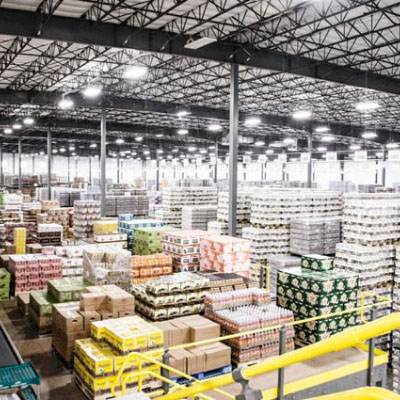Manufacturing is hard. Balancing availability, throughput and quality is a never ending struggle to minimize costs while maximizing throughput. When you look at the factory floor, you can see that everyone is busy, but have no way of knowing if they are achieving maximum efficiency.
Charting the correct course of action in your search for data to optimize your factory floor can be a difficult journey. You need a dashboard that is easy to use, a system that is fast to install, and an alert mechanism that will highlight areas of improvement.
One of the most frequent questions we get at Mingo Smart Factory is: where do I start?
Here are a few examples of customers success stories where they started simple with one data point on their journey to optimizing the factory floor:
Oral BioTech – Digitizing Counts
Before Mingo Smart Factory, OralBioTech was relying heavily on hourly manual reporting. Now the company can spend more time on value-added tasks while getting real-time transparency into their processes with digital displays throughout the plant. They were able to increase availability by correct in small inefficiencies. They found the many shortstops weren’t being calculated on some of the production lines, resulting in low availability. We have a case study that goes into more detail.
Louisiana Fish Fry – Unplanned Downtime
One example of downtime that Mingo Smart Factory helped identify was a hyper vigilant operator that wanted to make sure that each bag was perfect coming out of the machine. “There are established tolerances so we were able to coach them away from these short stops to correct minor defects that were perfectly allowable within our quality policy and eliminate those short interruptions.” Keep reading the case study with more data benefits here.

H&T Waterbury – Reducing Micro Stoppages
One of the initial reasons that H&T reached out to Mingo Smart Factory for help with was identifying how bad their downtime problem was. “Mingo helped us realize that our small micro stoppage problem was actually a bigger than we anticipated,” said Matt Hill, Operations Improvement Coordinator at H&T. Mingo Smart Factory helped H&T reduce their microstops by 71% as well as eliminate 18 hours of downtime. You can keep reading here.

H&T Waterbury – Planned Downtime
By integrating Mingo Smart Factory’s system and Fiix CMMS software, H&T Waterbury is able to move towards condition-based maintenance. This improves communication between teams, and diagnose and solve problems quickly. “It’s like car maintenance,” Spencer Cushman, Director of Operations at H&T explains. “Whether it’s 6 months or 5,000 miles, it’s the same idea with our machines and we can use [Mingo and Fiix] in combination.” Instead of scheduling maintenance when the machine breaks, temperature and vibration data from Mingo’s sensors will alert the Fiix software to issue a ticket when a machine starts to fall outside of normal specs.
We have another case study for H&T that goes into more detail about their Fiix integration to schedule preventative maintenance before a machine breaks.
Ice Industries – Keep It Simple to Start
One of Ice Industries’ primary requests when seeking data from Mingo Smart Factory was to get accurate reporting. Bennett Bishop, Director of Operations & Finance, needed a way to oversee five plants across the US and Mexico. “Six months before we had Mingo it was, ‘I’m gonna make an 80,000 piece adjustment to our inventory to get this back in line with what’s actually out there.’ We did a physical inventory recently for plant one in our main location where we installed Mingo first. We were accurate to the part and to the pound of steel.”
Ice Industries needed a production monitoring system so they could make data driven decisions about inventory and operational costs with:
- Real Time Data and Accurate Production Numbers
- Accountability without the Errors of Manual Counting
- Ability to Analyze Historical Data
Start Simple with One Data Point
Where should you start when optimizing the factory floor? The easiest data point for most factories to start with is production counts and downtime. Most of Mingo’s customers begin by automating their data collection and establishing production counts and downtimes.
Automatically recording production counts through PLCs, sensors and tablet enabled dashboards will let operators and managers know minute-by-minute if a line is ahead, behind or on track for success. These counts can be displayed in scoreboards across the factory floor to help manager address problems as they happen.
Downtime is a prompt that operators select if a machine is not running due to planned, or unplanned downtime. Additional reasons such as maintenance or clearing a jam can be added later. The important information to gather first is why the machine is not making your factory money. This data can also be added to a scoreboard on the factory floor. An interactive dashboard will visualize how often a machine is up versus down and the most common reasons.
Want to know? Schedule a free demo of Mingo Smart Factory today.


